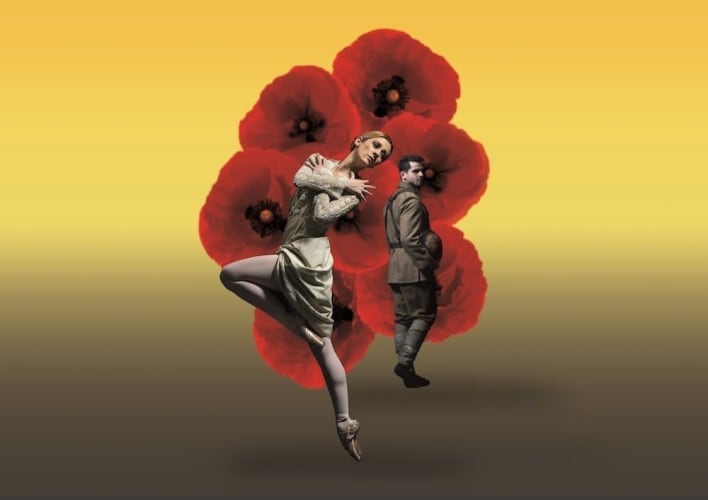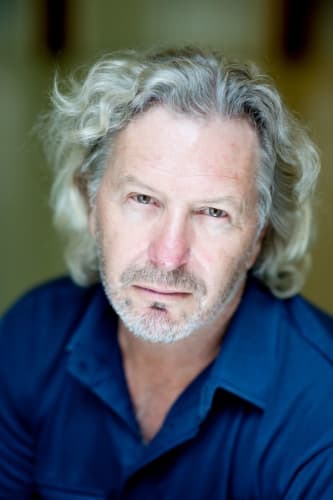Choreographer Wayne Eagling was born in Montreal and trained at the Patricia Ramsey Studio of Dance Arts and The Royal Ballet School before graduating into The Royal Ballet in 1969. A favourite of Kenneth MacMillan, Eagling created numerous roles in his ballets. He retired from the company in 1991 to become Artistic Director of Dutch National Ballet, and later became Artistic Director of English National Ballet until 2012.
He has choreographed work around the world, from Frankenstein, the Modern Prometheus and Beauty and the Beast for The Royal Ballet, Alma Mahler for La Scala Ballet in Milan and Beauty and the Beast for Kremlin Ballet Company in Moscow to The Wall concert to commemorate the fall of the Berlin Wall in 1989 and Queen’s I Want to Break Free music video.
Eagling’s latest work is Remembrance, inspired by the story of Dame Marie Rambert’s life during the Great War, to be presented by New English Ballet Theatre, a company of which he is a patron, later this year. He said, “the original concept came from Greg Billingsley when I was director of English National Ballet and we created a pas de deux based on the idea of lovers being separated during the First World War.”
However this piece is based on the real-life couple of “legendary” Marie Rambert and her future husband, the dramatist Ashley Dukes. “Soon after they met and fell in love, he was called to the front and she was left wondering if she’d ever see him again.
“Marie Rambert’s experience was similar to many women’s experiences during the war—although her story had a happy ending. I wondered what it must have been like for those separated by the war, the lack of communication, the dread of opening the door and being handed a telegram containing bad news. While Remembrance isn’t a strictly a biography, I hope audiences will engage with the story and enter into a tiny slice of history while enjoying the performance of our beautiful dancers. We have 12 dancers and 4 student dancers from Central Ballet School who will be playing the soldiers.”
The piece is set to Handel’s Ode to St Cecilia, which he says is “quite a difficult piece of music to make a narrative ballet to; it has moments that are inspiring and beautiful and whenever you use really good music that inspires you to greater things in your choreography.”
Although Canadian by birth, Eagling moved to California at the age of 8 and began dancing almost by accident. He said, “my sister took ballet classes at the local studio and the dance teacher was trying to encourage boys to take class, so I was dragged along and I said I would only do tap.
“So I started with tap and then because the studio was quite near to where my father’s work was I would hang around, but one day I did a ballet class and I found I was much better at ballet than I was at tap. So I started doing ballet once a week, twice a week, then every day and all through the summer and I had a very inspiring ballet teacher who came from New York, Miss Ramsey.
“When the Royal Ballet were in San Francisco one year, she wrote to them and asked if they could look at one of her students, which was me, and I went up and did an audition class with (the fabulous Norwegian dancer) Gerd Larsen on the stage of the San Francisco Opera House. I was subsequently offered a scholarship to the Royal Ballet School and Miss Ramsey said you must go, and of course if Miss Ramsey said jump in front of a bus I would have!
“So off I went to White Lodge in 1966 when I was 15. To be put into an English boarding school was not my idea of fun but after a few months I found some digs. I’d never been to London before but when I got here the Swinging Sixties were in full swing.”
When asked about his highlights of his years dancing with The Royal Ballet, he said, “dancing with Margot Fonteyn was pretty special. When Sir Frederick Ashton was choreographing Hamlet and Ophelia for her and Rudolph Nureyev, he wasn’t available, so he asked me to come in and stand in while he was choreographing the piece. Just the fact that I was working with Margot Fonteyn and Frederick Ashton on a new work was amazing. After Rudolph had danced it, we took it on tour, so I partnered Margot on a Korean, Japanese and American tour in Les Sylphides and Hamlet.
“It was also great fun to do my first ballet, Frankenstein, the Modern Prometheus. I was given a £15,000 budget and the stage at Covent Garden.”
While at The Royal Ballet, Eagling was asked to dance in other people’s projects for the Royal Ballet Choreographic Group and he asked ballet master Leslie Edwards if he could choreograph something himself. “I did a few pieces over the years and, through Leslie’s encouragement, I found it a different artistic challenge than being a dancer where you do other people’s things. It's much more difficult and exposing to show your ideas on stage. The first time is always the most difficult. I suppose it's like going to a nudist beach: the first time is difficult and then you get into it!”
On moving to Dutch National Ballet, he said, “it was nice it was to be director of a company that didn’t do Nutcracker! But Nutcracker hadn’t been in their rep ever and of course the first big production I did was… Nutcracker.
“Originally, we were going to do Nureyev’s production and Nicholas Georgiadis’s. But there was a problem with costumes and sets so I asked Toer van Schayk (the brilliant Dutch choreographer, set and costume designer) to do the sets and costumes and we ended up doing a new production. We had no idea who was going to do what. The only thing Toer said he wanted to do was the pas de deux before the snowflakes. Of all the productions of Nutcracker I’ve been involved in it’s my favourite.”
He said he tends to get fed up of the music in the productions he is choreographing as he has to listen to it over and over again, but he has wide musical tastes: “I’ve made a pas de deux to Prince, four ballets with Van Ellis with original music. I love working with a composer, so you can say what you want. I love Rachmaninov; I’ve choreographed Rite of Spring; Toer and I made a ballet to The Magic Flute where we used Mozart music not from The Magic Flute but from Mozart’s entire canon.”
On Remembrance, he said, “Marie Rambert is representing women whose men went to the front; so although she’s Marie, it could be anyone. We’re using Marie and her story as a place setting and a time setting because she was in London at that time and her husband went to war and of course, didn’t die. So that makes it different from what the original Remembrance story was. Originally it was about the death, but I would have thought she’d like the idea.
“It's important to say it's not a biography, it’s about a feeling and she represents a time and place and a name that was there, but I can’t pretend to know what Marie Rambert felt, I’m just hoping to be able to show, as a choreographer, what I think the feelings would be of every woman and the community felt at the time.
“Through the music, the dancing, the story and design I’m hoping that it will make people think what sacrifices people have made that allow us to live our life how we live it now and how many people sacrificed themselves and how brave people were.
“I’m not sure if our generation would have been able to do what that generation did. Just the fact of being in a trench and someone blowing a whistle and you get up and run towards machine guns. I don’t think my generation really understands the kind of bravery that took. I’m hoping they will get some nostalgic feeling of thanks.”
Remembrance, performed by New English Ballet Theatre, will be on tour in September and October 2018 in a double bill with The Four Seasons choreographed by Jenna Lee to Max Richter’s adaptation of Vivaldi’s music.

